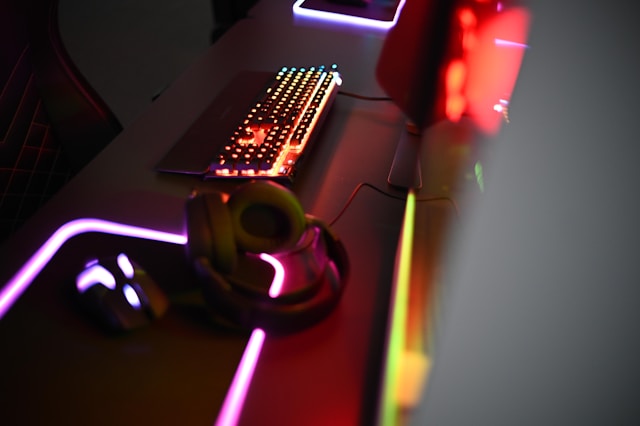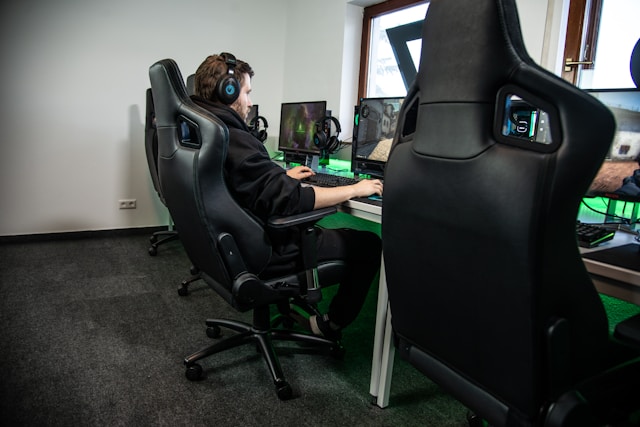Cross-play is great until someone’s frame rate tanks and the table desyncs. This post explains, in plain English, what “PCVR” and “standalone” actually mean, why they feel different in a poker room or live-dealer lounge, and how to tune both so lobbies stay smooth and fair.
Core terms, plain and useful
PCVR streams your game from a Windows PC to the headset via cable or Wi-Fi. The PC does the heavy lifting; the headset mostly displays video and tracks your head and hands. Performance hinges on your GPU, encoder settings, and network.
Standalone runs the game fully on the headset’s mobile chip. No streaming, lower heat and fewer points of failure. Performance hinges on the app’s optimization, your refresh rate choice, and thermal limits. Cross-play works fine, but visual settings are capped.
Where it shows up at the tables
In VR poker or blackjack, PCVR usually renders sharper chips, fonts, and avatars, so reads on tells and UI prompts feel easier. Standalone keeps interaction snappy with fewer stutters when the router is busy, but text and distant detail can be softer.
PCVR can spike if your Wi-Fi gets congested or the encoder overruns. Standalone can throttle after long sessions, dropping refresh rate or resolution to keep cool. Both are playable; the trick is picking which compromises you want.
Latency, frames, and stability

Lower motion-to-photon latency keeps betting gestures clean and reduces motion discomfort. Tethered PCVR is the most stable path: one cable, no radio interference, consistent encode times. Wireless PCVR adds 5–20 ms depending on router quality and distance.
Standalone avoids network latency entirely, but your cap is the headset’s chip. If you insist on 90 Hz, stick to modest render scales. For long casino nights, 72–80 Hz with consistent frame pacing beats a flaky 90 Hz that reprojects half the time.
Latency checklist (keep it short):
- Prefer cable for tournaments; use wireless only with Wi-Fi 6/6E, line-of-sight, and a dedicated SSID.
- Lock refresh to what you can hold (80 or 90 Hz), not what looks good in menus.
- On PCVR, cap bitrate to what your router can deliver continuously, not peak—aim for stable over spikes.
- Kill background up/downloads on the PC and router QoS anything not VR.
Wi-Fi or cable?
Cable wins when money or bragging rights are on the line. It removes RF variables and encoder jitter. If your GPU is mid-range, a cable also lets you push slightly higher render scales without worrying about streaming overhead.
Wireless is fine for social nights if you set it up like a mini-arena: router two meters away, clear line-of-sight, 160-MHz channel if available, and nothing else on that SSID. If the graph shows jitter, lower bitrate first, then resolution, then refresh rate.
Resolution, bitrate, and what to tweak
Sharpness matters for reading chip stacks, timers, and small UI. PCVR can push higher render scales and better anti-aliasing; standalone relies on foveated rendering and smart upscalers. Don’t chase numbers—chase legible text and steady hands.
Use encoder presets that keep latency predictable. If your stream blurs during quick head turns, lower bitrate in small steps and prefer a slightly lower render scale over a choppy frame-time graph. On standalone, pick the developer’s “performance” preset for busy multiplayer rooms.
| Goal (casino play) | PCVR tweak first | Standalone tweak first | Why it helps |
|---|---|---|---|
| Clear chip counts | Render scale ↑ | Text size/UI scale ↑ | Improves font edges without wrecking latency |
| Less judder | Refresh ↓ (to 80) | Refresh ↓ (to 72/80) | Frame pacing over headline Hz |
| Fewer blur streaks | Bitrate ↓ 10–20% | Performance mode on | Reduces encoder pressure/thermal trips |
| Faster menus | Disable overlays | Close background apps | Frees CPU/GPU cycles for input/UI |
| Longer sessions | Cable; fan on PC | Room temp ↓, breaks | Avoids thermal throttling spirals |
Setup recipes for smooth cross-play nights

For PCVR tournaments, cable up, set 80 Hz, render scale just high enough to read fine text, then fix bitrate and forget it. Test a full practice session against a crowded lobby, not a solo room, and watch frame times instead of average FPS.
For wireless PCVR, dedicate a modern router to the headset, place it close, and pre-select a clean channel. Set a conservative bitrate that never spikes, even when someone in your house starts streaming. If you still see hiccups, reduce refresh rate before touching resolution.
For standalone, target the “performance” profile, keep the guardian clear, and let dynamic foveation do its job. If the room heats up, take short breaks before the headset downclocks. Consistent comfort beats chasing maximum settings you can’t sustain.
House rules that keep lobbies fair
Agree on a baseline: refresh at 80 Hz for everyone, PCVR users on cable for finals, and no aggressive overlays or capture apps during play. These small rules prevent edge-case stutters that tilt outcomes.
Run a 5-minute pre-match check: text legibility test, controller firmware confirmed, network graph clean. Fix issues before buy-ins start, not after someone times out mid-hand.
